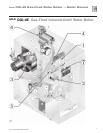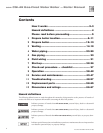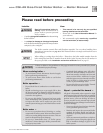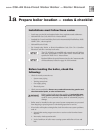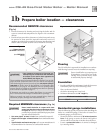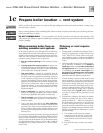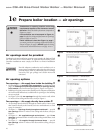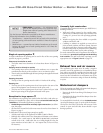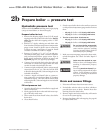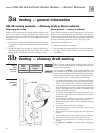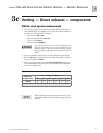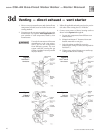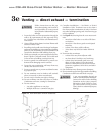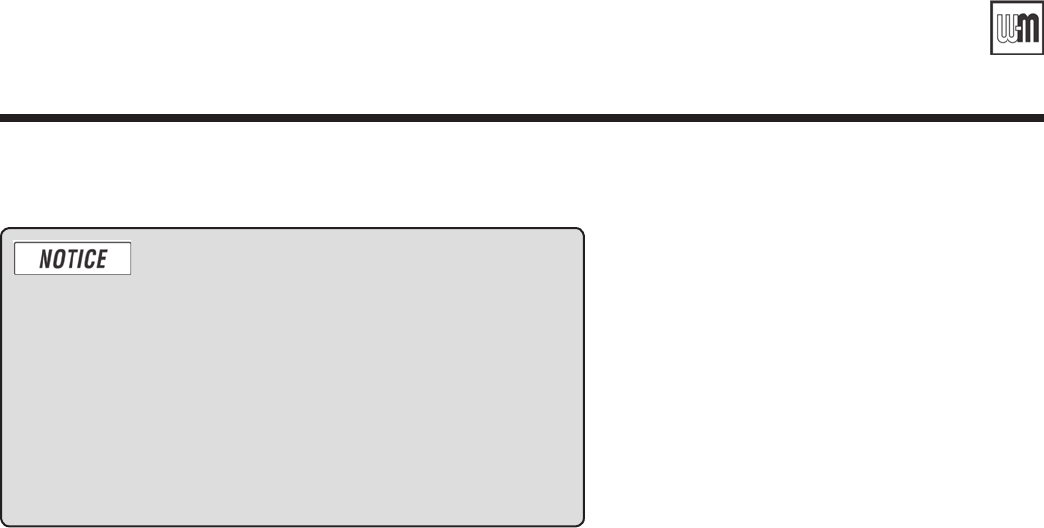
Part Number 550-110-711/1108
11
GOLD
CGi-4E Gas-Fired Water Boiler — Boiler Manual
Unusually tight construction
Unusuallytightconstructionmeans(perANSIZ223.1)
buildings in which:
a. Walls and ceilings exposed to the outside atmo-
sphere have a continuous water vapor retarder with
a rating of 1 perm or less with openings gasketed,
and . . .
b. Weather-stripping has been added on openable
windows and doors, and . . .
c. Caulkingorsealantsareappliedtoareassuchas
joints around windows and door frames, between
sole plates and floors, between wall-ceiling joints,
between wall panels, at penetrations for plumbing,
electrical, and gas lines, and in other openings.
For such construction cases, if appliances use inside air
for combustion, provide air openings into the building
from outside
.Sizeandlocatetheseopeningsperthe
appropriate case in Figure 3, 4 or 5 on page 10.
Motorized air dampers
If the air openings are fitted with motorized dampers,
electrically interlock the damper to:
• Preventtheboilerfromringifthedamperisnot
fully open.
• Shuttheboilerdownshouldthedamperclosedur-
ing boiler operation.
To accomplish this interlock, wire an isolated contact
(proving the damper open) in series with the thermo-
stat input to the boiler. The boiler will not start if this
contact is open, and will shut down should it open
during operation.
Exhaust fans and air movers
The appliance space must never be under a negative
pressure, even if the appliance(s) are installed as direct
vent. Always provide air openings sized not only to the
dimensions required for the firing rate of all appli-
ances, but also to handle the air movement rate of the
exhaust fans or air movers using air from the building
or space.
Single air opening option
✷
A single combustion air opening can be used in lieu of the two-opening
options on page 10, provided:
Clearances from boiler to walls
• TheboilermusthaveclearancesofatleastthoseshowninFigure1a,
page 7.
Opening must be directly to outside
• Theopeningmustconnectdirectlytotheoutdoorsortoaspacethat
communicates directly to the outdoors (not to an interior space).
• Theaircanbeprovidedthroughadirectopeningorthroughahorizontal
or vertical duct.
Opening placement
• Thetopoftheairopeningmustbewithin12inchesoftheceiling.
Opening size
• Thefreeareaoftheopeningmustbeatleastequaltothesumofthe
areas of all equipment vent connectors in the space, and . . .
• Thefreeareaoftheopeningmustbeatleast1squareinchper3,000
Btu/hrinputratingofallequipmentlocatedinthespace.
FREE AREA of openings — the minimum areas
given in this manual are free area (equals the area,
length times width of opening, after deduction for
louver obstruction).
Use the free area information provided by the louver manufacturer.
When this information is not available, assume:
• Woodlouvers—assumefreeareais20%oftotal;sotheactualarea
of each opening with wood louvers would be 5 times the required
free area.
• Metallouvers—assumefreeareais60%ofactualarea;so,forwood
louvers, the actual area of each opening must be 1.67 times the
required free area.
Exception for large spaces
✷
Nocombustionairopeningsareneededwhentheboiler(andotherap-
pliances) are installed in a space with a volume at least 50 cubic feet per
1,000 Btuh
of all installed appliances, provided:
• the building must not have unusually tight construction (see defini-
tion, this page)
• allclearancesaroundtheboilermustmustbenolessthanshownin
Figure 1a, page 7.
To determine if the space is large enough to qualify:
• AddthetotalinputofallappliancesinMBH(1,000’sofBtuh).
• Multiplythisnumbertimes50todetermineminimumroomvolume.
• Example:Foratotalinputof100MBH(100,000Btuh),minimum
volume is 50 x 100 = 5,000 cubic feet. At a ceiling height of 8 feet, the
space must have at least 5,000 ÷ 8 = 625 square feet (25 feet x 25 feet,
for instance).



